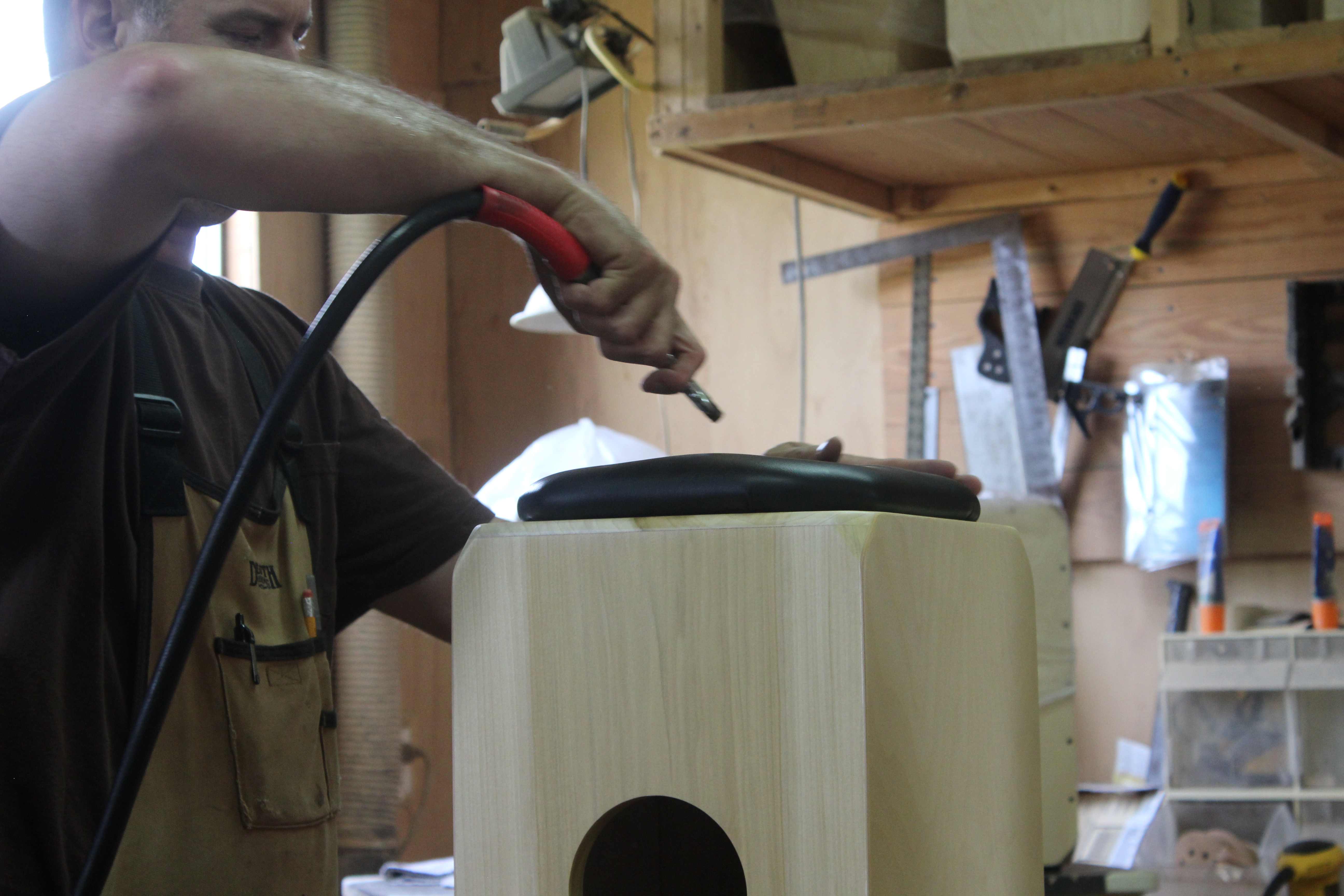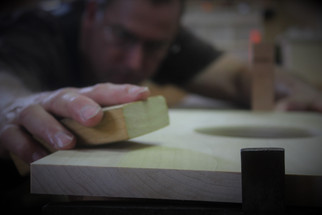Posted by Steve Head on 18th Apr 2023
My Experience Over The Years Building The Cajon
As a percussionist and craftsman, I have always been fascinated by the cajon. This versatile instrument has been around for centuries and has been used in many different musical styles. I have built many handcrafted cajons over the years, and I would like to share my experience with you.
The first step in building a cajon is selecting the right materials. The cajon's body is usually made of wood, and the most common types of wood used are poplar,birch, maple, and mahogany. I prefer to use poplar because it is a strong, durable wood that provides excellent sound quality and is easy to work with. The thickness of the wood can vary depending on the desired sound, but most cajons have a thickness of ⅜" to ¾".

Once the wood is cut to size and sanded smooth, it's time to add the hardware. This includes the snare wires, tuning hardware, and sound hole. The snare wires are essential to the cajon's sound and are usually made of steel or nylon. I prefer to use steel wires because they produce a crisp, clear sound. The tuning hardware consists of the screws and washers that are used to adjust the tension of the snare wires. The sound hole is traditiontionallylocated on the back of the cajon and is used to project the sound outward. Many of my cajon designs have the sound hole on the side of the drum.
Once the hardware is installed, it's time to tune the snare wires. This involves tightening or loosening the screws on the tuning hardware to adjust the tension of the snare wires. It's important to tune the snare wires carefully to avoid any rattling or buzzing that can affect the cajon's sound quality.
Next, it's time to add the playing surface. This is usually made of plywood or hardwood and is attached to the cajon with screws or glue. The playing surface is usually thinner than the body of the cajon and is usually around ¼" to ½" thick. I prefer to use hardwood for the playing surface because it produces a bright, crisp sound.
Finally, it's time to decorate the cajon. This is where you can let your creativity shine and add your personal touch to the instrument. I like to use wood-burning techniques to create intricate designs on the body of the cajon, or I may add colorful paint or dye to create a unique look. It's important to remember that the decoration should not interfere with the sound quality of the cajon, so be careful not to add too much weight or alter the shape of the body.
When I build cajons it is not just about creating an instrument; it's about creating a piece of art that can be used to create music and connect people. When I see people playing my cajons and enjoying the sound they produce, it brings me a sense of joy and satisfaction that is hard to describe. The cajon has been used in many different musical styles, from flamenco to rock, and it continues to be a versatile instrument that can be used in many different settings.

In conclusion, building handcrafted cajons is a challenging and rewarding experience that requires skill, patience, and creativity. By selecting high-quality materials, carefully installing the hardware, and tuning the snare wires with care, you can create an instrument that will provide a clear, resonant sound and bring joy to people for years to come. If you're interested in building cajons, I encourage you to start small and practice your skills until you feel confident enough to take on more complex projects. With dedication and hard work, you can become a skilled cajon builder and create instruments that will connect people to their inner rhythm and bring joy to the world.
As an Amazon Associate, I earn from qualifying purchases. This means that if you click on the link and make a purchase, I may receive a small commission at no extra cost to you. This helps support my work in providing quality content. Thank you for your support!



